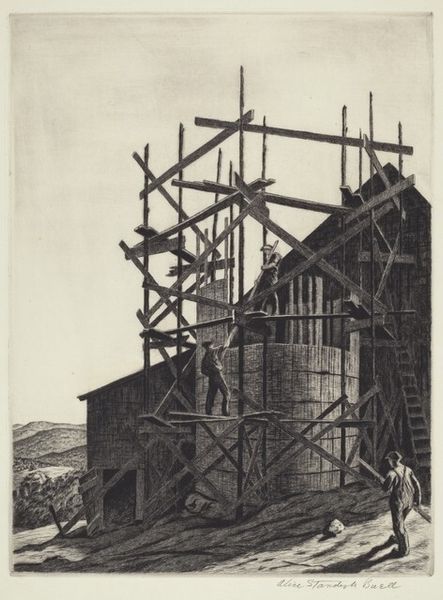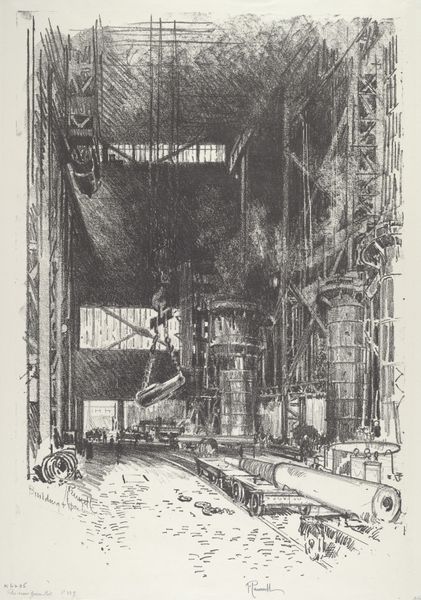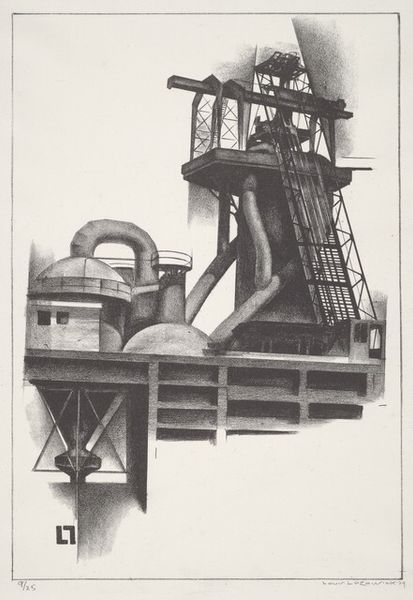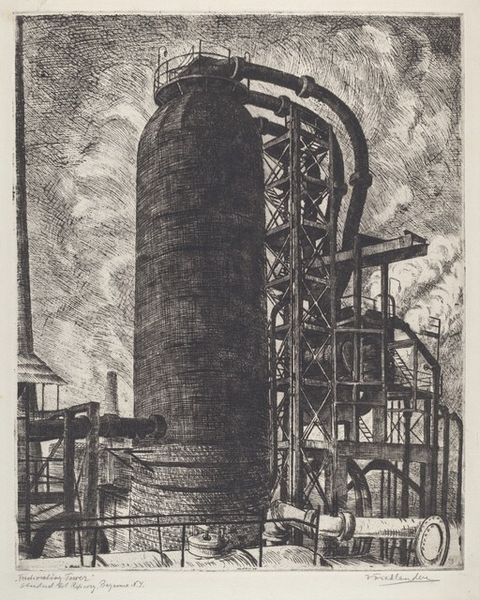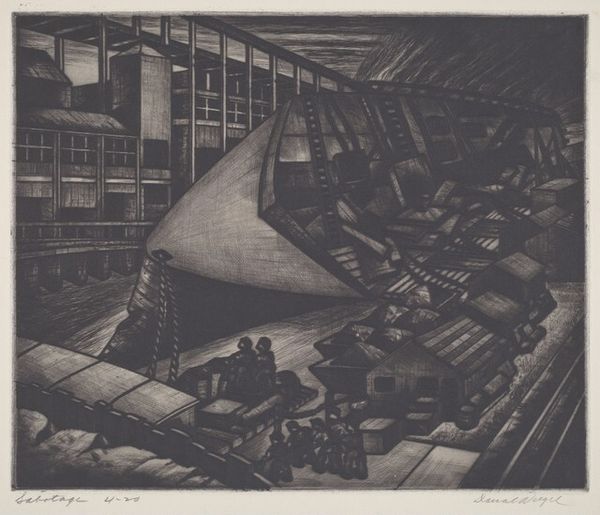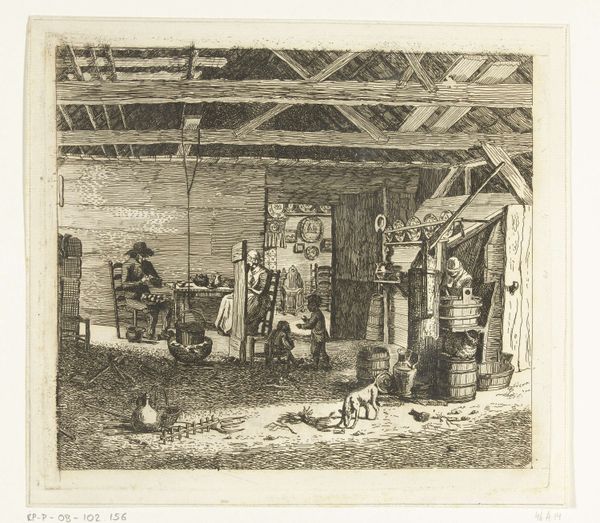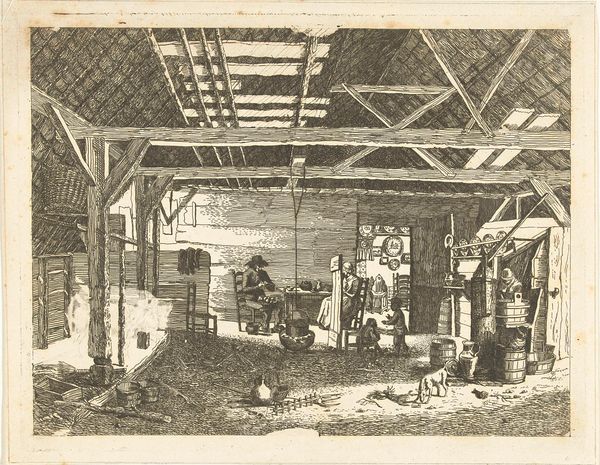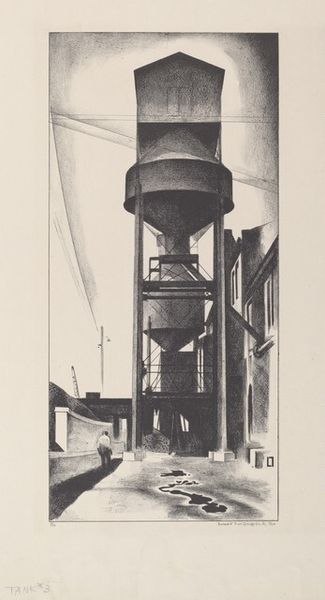
print, etching, engraving
# print
#
etching
#
cityscape
#
engraving
#
modernism
#
realism
Dimensions: plate: 30.2 × 23.2 cm (11 7/8 × 9 1/8 in.) sheet: 35 × 29.5 cm (13 3/4 × 11 5/8 in.)
Copyright: National Gallery of Art: CC0 1.0
Jackson Lee Nesbitt's "Stripping Ingots" presents an industrial scene rendered through etching on a metal plate, transferred onto paper. The composition is a dense network of lines, forming shapes and textures that evoke the raw, imposing nature of factory work. The monochromatic palette emphasizes contrasts in light and shadow, creating a dramatic visual experience. Nesbitt's mastery lies in his ability to capture the structural complexity of the factory setting. Lines converge and diverge to define the metallic girders, stacks of ingots, and looming machinery, which can be seen as a semiotic system that reflects the industrial age's values. The artist challenges traditional notions of beauty, finding it instead within the geometric precision and functional design of the factory. Look at how the precise, calculated lines create a rigid structure with an underlying sense of industrial power. Nesbitt makes a statement about the evolving aesthetics of the 20th century, where beauty is redefined through the lens of industrial functionality and geometric precision.
Comments
No comments
Be the first to comment and join the conversation on the ultimate creative platform.

